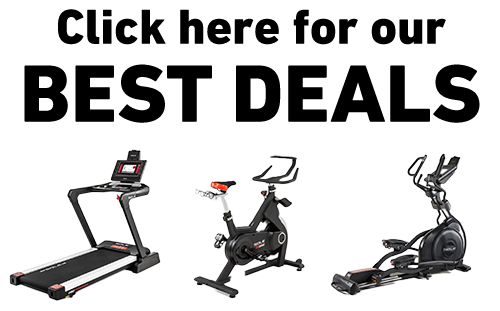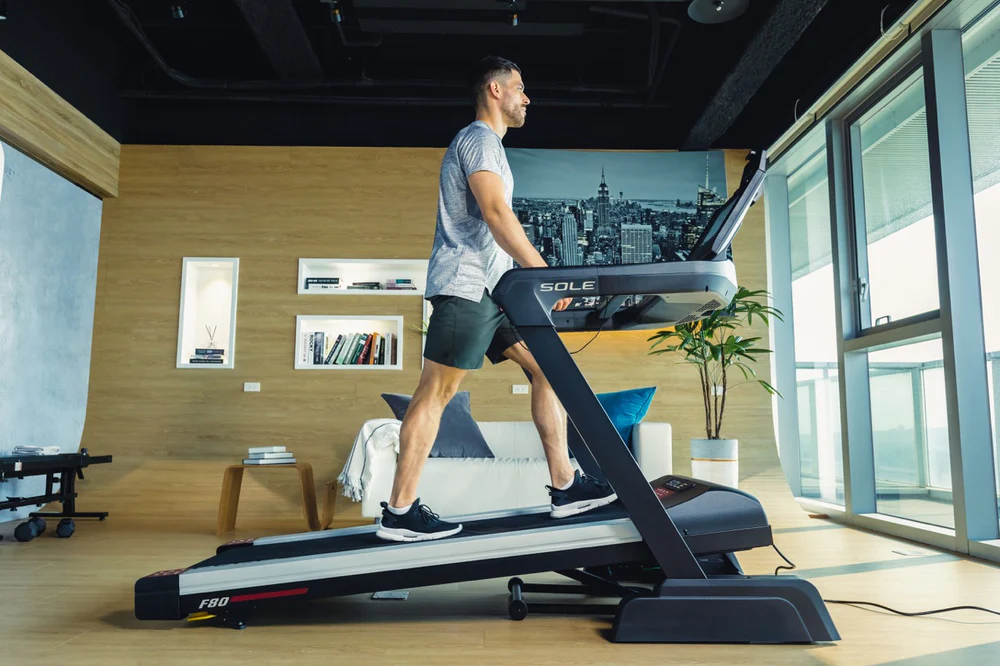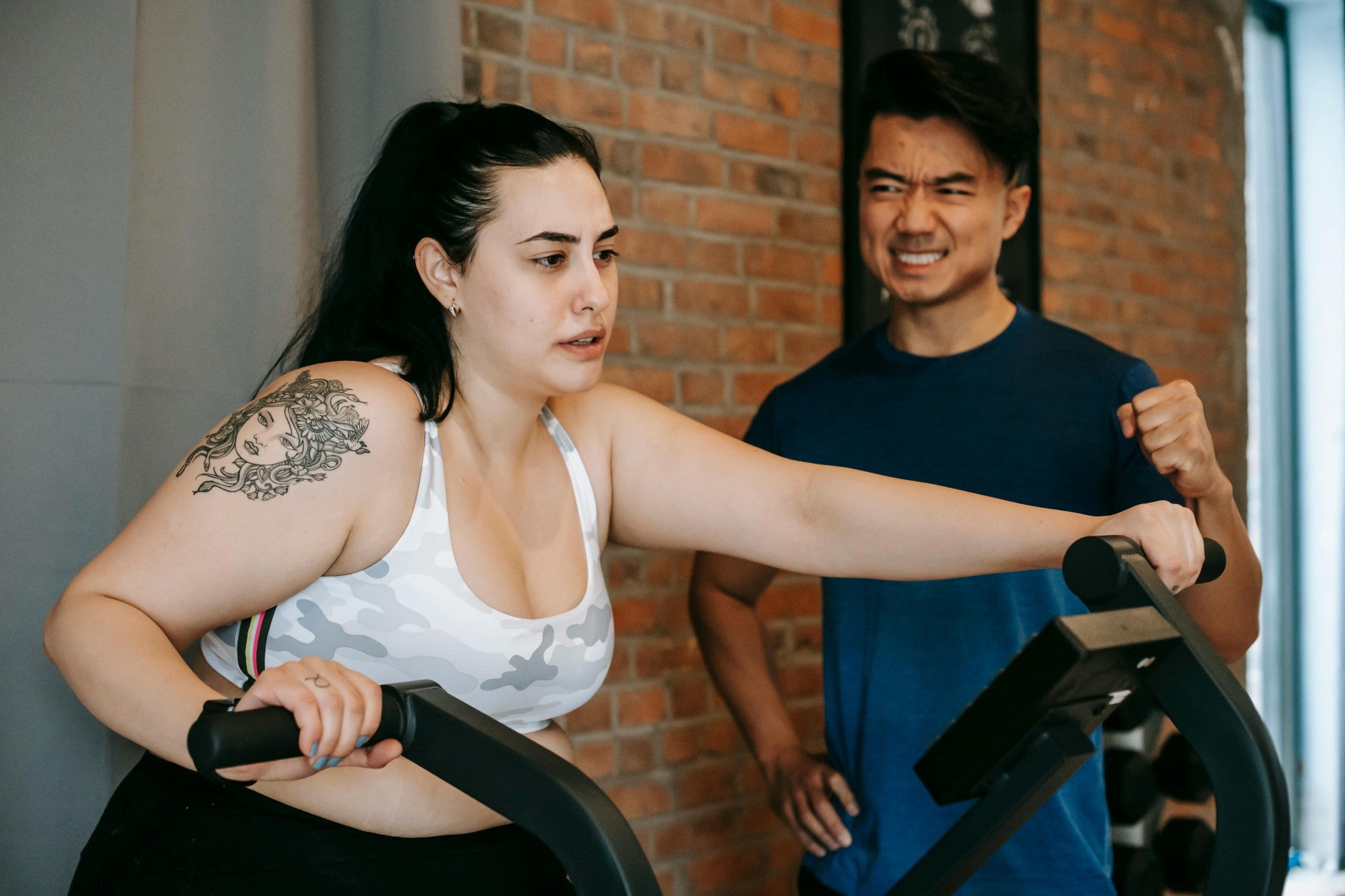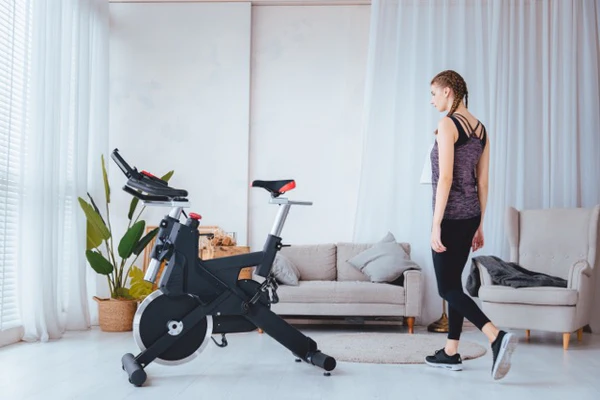Key Takeaways
- Incline walking on a treadmill increases heart rate and improves endurance for better cardiovascular health.
- This exercise burns more calories than flat walking - which contributes to weight loss and muscle toning.
- Walking at an incline activates more muscle groups, particularly in the legs and glutes.
- Incline walking is also safer as it reduces the impact on joints compared to running.
- Starting with a lower incline and gradually increasing it can help beginners safely build strength and stamina.
Intro to Treadmill Incline Walking
Treadmill incline walking simulates walking uphill - which makes your workout more challenging as it forces your muscles to work harder.
Regular walking on a flat surface primarily engages your leg muscles while incline walking targets different muscle groups, including calves, hamstrings, and glutes. This added resistance also boosts your cardiovascular workout, helping you burn more calories in less time.
Popular Incline Levels
Most treadmills such as the ones from SOLE have incline settings ranging from 0% to 15%. Beginners might start with a 1-4% incline, while more advanced users may challenge themselves with inclines above 10%.
|
At SOLE Fitness, we're proud to offer the best treadmills for your home or gym. These machines are crafted to meet the highest standards of quality and performance, ensuring they are ideal for anyone - from fitness novices to seasoned athletes. Featured Product SOLE Treadmills: Starting at $1,199.99, SOLE treadmills excel in ergonomic design, durability, and value. Equipped with advanced cushioning to minimize joint impact, powerful, quiet motors, and wide running surfaces, they suit any fitness level. |

Health Benefits of Incline Walking
Cardiovascular Health
Incline walking is excellent for your heart. It increases your heart rate more than flat walking, which strengthens your cardiovascular system. Over time, you can improve your endurance and lower your risk of heart disease.
Calorie Burn
When you walk on an incline, your body has to work harder to move forward, which means you'll burn more calories compared to walking on a flat surface. This is great if you’re looking to lose weight.
Muscle Activation
Incline walking activates more muscle groups than flat walking - besides your legs, it engages your glutes and core, providing a more comprehensive workout. So you can tone your entire lower body and build strength faster.

Reduced Joint Impact
Walking on an incline is a low-impact exercise so it’s easier on your joints compared to running - a great option for people with joint pain or those recovering from an injury. You can still get a high-intensity workout without the risk of high-impact stress.
All SOLE treadmills also come with an advanced cushioning system - Cushion Flex Whisper Deck - that reduces impact by up to 40%, when compared to running on asphalt.
Improved Endurance
Regularly walking on an incline can significantly improve your endurance. As your muscles adapt to the increased effort, you'll find that you can walk longer and at steeper inclines. This improved stamina can translate to better performance in other physical activities as well.
Getting Started with Incline Walking
Choosing the Right Treadmill
Before you begin your incline walking journey, choose the right treadmill. Here are some top models to consider:
- SOLE F63 Treadmill: Known for its durability and affordability, the F63 has a range of incline settings and a 3.0HP motor - a great choice for a beginner and a seasoned walker alike.
- SOLE F80 Treadmill: This model has a larger running surface of 22” x 60” and higher weight capacity of 350 lbs. - perfect for those who want a bit more space and stability during their workouts.
- SOLE TT8 Treadmill: A commercial-grade, non-foldable treadmill, this model has a powerful 4.0HP motor and even 6 levels of decline.
Setting Initial Goals
Start with a manageable incline and duration - a low incline of around 1-2% and aim for a duration of 15-20 minutes. As you become more comfortable, you can gradually increase the incline and the length of your workout.
Gradual Incline Progression
- Week 1-2: 1-2% incline for 15-20 minutes
- Week 3-4: 3-4% incline for 20-25 minutes
- Week 5-6: 5-6% incline for 25-30 minutes
Tracking Your Progress
Keep a workout journal or use a fitness app to log your incline, duration, and any other relevant details, to see how far you've come and identify areas for improvement. Besides that, tracking your progress can help you set new goals and challenges - so you can keep your workouts fresh and exciting.
Safety Tips
Warming Up and Cooling Down
Always start your incline walking sessions with a proper warm-up - spend 5-10 minutes walking at a flat incline to get your muscles warmed up and your heart rate elevated.
End your workout with a cool-down period to gradually bring your heart rate back to normal and prevent muscle stiffness.
Maintaining Proper Form
- Keep your back straight and avoid leaning forward excessively.
- Engage your core muscles to maintain stability.
- Take shorter, more controlled steps to prevent overstriding.
- Use the handrails for balance, but avoid relying on them too much.

Listening to Your Body
- If you feel pain in your joints or muscles, reduce the incline or take a break.
- Stay hydrated by drinking water before, during, and after your workout.
- Wear appropriate footwear to provide support and cushioning for your feet.
Advanced Incline Walking Techniques
Once you've mastered the basics of incline walking, you can try incorporating advanced techniques to further challenge yourself and enhance your fitness levels.
Interval Training
Interval training involves alternating between periods of high intensity and low intensity. For incline walking, this could mean alternating between a steep incline and a flat incline. For example:
- Walk at a 10% incline for 2 minutes.
- Reduce to a 2% incline for 1 minute to recover.
- Repeat this cycle for 20-30 minutes.
This type of training can help improve your cardiovascular fitness, burn more calories, and keep your workouts interesting.
Combining Incline and Speed
You can also vary your walking speed to increase the intensity of your workouts. For instance, try walking at a brisk pace on a moderate incline, or slow down slightly when you increase the incline.
This way, you can challenge both your cardiovascular system and your muscles.
Hill Simulation Workouts
Hill simulation can be particularly beneficial for those training for outdoor events. Here's an example of a hill simulation workout:
- Start with a 5-minute warm-up at a 0% incline.
- Increase the incline to 5% and walk for 3 minutes.
- Reduce the incline to 1% for 2 minutes to simulate walking downhill.
- Repeat this pattern, gradually increasing the incline to 10% and then back down.
SOLE treadmills come with a pre-programmed Hill workout too, in addition to others such as HIIT and Strength.

Try Treadmill Incline Walking
Treadmill incline walking has tons of health benefits - from improved cardiovascular health and increased calorie burn to enhanced muscle activation and reduced joint impact.
SOLE treadmills are perfect for these workouts - with advanced cushioning, powerful motors, and customizable settings to help you achieve your fitness goals. With models like the SOLE F63, F80, and TT8, you can enjoy a high-quality, durable treadmill that supports your incline walking journey.
Frequently Asked Questions (FAQ)
How steep should I set my treadmill incline?
For beginners, a 1-4% incline is a good starting point. As you become more comfortable, you can gradually increase the incline. Advanced users might go up to 10% or higher, depending on their fitness level and goals.
How long should I walk on an incline?
Start with 15-20 minutes and gradually increase the duration as you build endurance. Aim for 30-45 minutes per session.
Is incline walking better than running?Incline walking is easier on the joints and can be just as effective for burning calories and improving cardiovascular health. Running, on the other hand, is a more intense workout in a shorter time.
Can incline walking help with weight loss?
Yes, incline walking can help with weight loss by burning more calories than flat walking. The added intensity of walking uphill forces your body to work harder - which increases calorie burn.
What are the best shoes for treadmill incline walking?
Look for shoes that have good arch support, cushioning, and stability. Running shoes are often a good choice, as they are designed to handle the impact and provide comfort during long walks.




Leave a comment
This site is protected by hCaptcha and the hCaptcha Privacy Policy and Terms of Service apply.